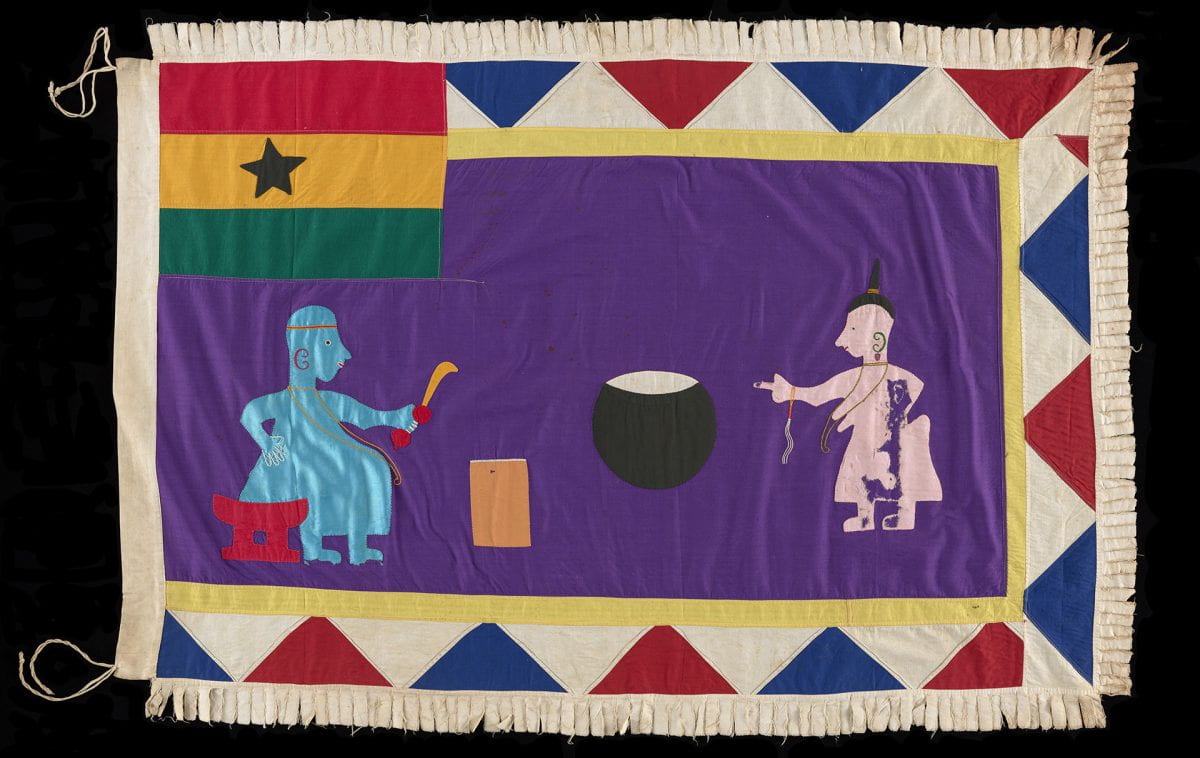In the 17th century, the Fante people, a subgroup of the Akan tribe, migrated from northeast of what is now Ghana to the central coast on the Gulf of Guinea. They brought with them a military organization called Asafo companies, a militia of men and women whose membership was determined by patrilineal lineage. These companies deterred Western colonial advances into the interior, and, for a time, established the Fante as middlemen between European traders and inland people.
For over 300 years, each Asafo company has displayed its power and identity with a unique 3 x 5’ flag, known in Fante as a “frankka.” Possibly inspired by European military regalia, Asafo flags feature dynamic iconography that is distinctly African. Symbolic motifs represent everything from proverbs, maxims, jokes, warnings, insults and folktales to history and local events. Flags made prior to independence carry a simplified Union Jack in the upper-left corner and, after 1957, the flag of Ghana.

When a new leader takes over a company, he or she commissions, finances and helps design a new flag. Flag makers, usually men organized into family workshops, appliqué solid-colored designs on both sides of the cotton trade cloth, sometimes embellishing them with embroidered details.
This example from the mid-20th century features the Ghanaian flag and two powerful figures: a leader on the left, distinguished by his weapon and stool, and a message-bearer whose consequence is established by her elongated headdress and breasts, and fly-whip wristlet. The large bowl at the center suggests a never-empty pot of food or palm wine.
Over time, the Asafo companies’ military function has been exchanged for political, social, ritual, community and neighborhood-watch activities. The iconic frankka flags are still used in parades, dances, festivals and to decorate the company shrine.
Researched by Peggy Greenwood
Peggy Greenwood has been a docent with the museum since 2007 after retiring from a 40-year career with the Department of Defense. Previously she served the museum as a program volunteer for seven years. She is also active in the Potomac Fiber Arts Guild and dabbles in knitting, experimental stitch, surface design, sewing and weaving.
